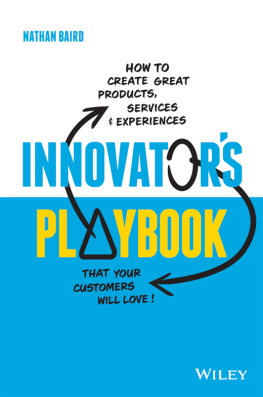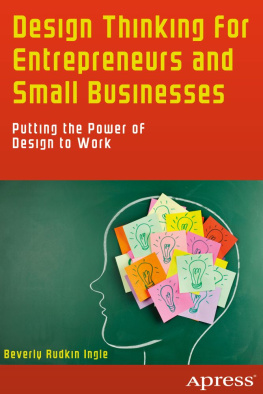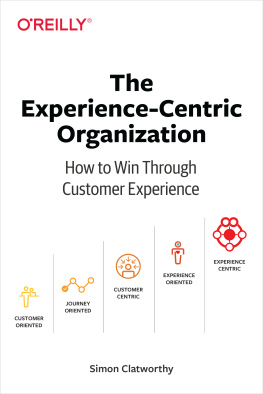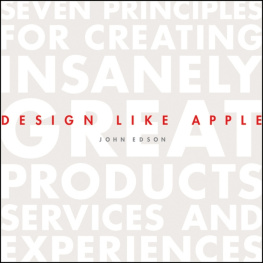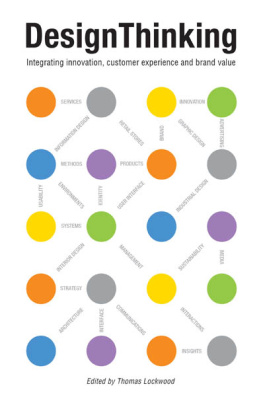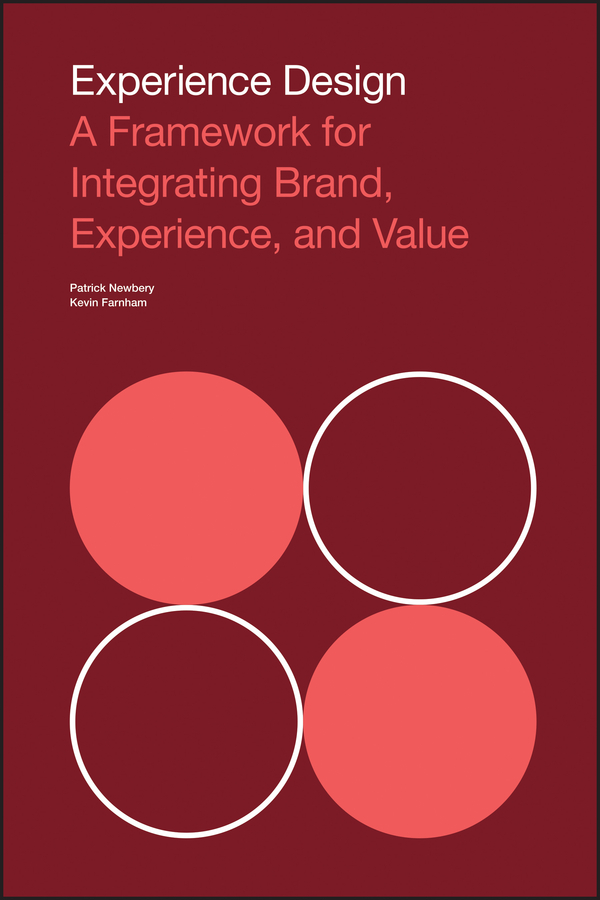Contents

Cover image and design: Method, Inc.
Copyright 2013 by Patrick Newbery, Kevin Farnham, and Method, Inc. All rights reserved.
Published by John Wiley & Sons, Inc., Hoboken, New Jersey.
Published simultaneously in Canada.
No part of this publication may be reproduced, stored in a retrieval system, or transmitted in any form or by any means, electronic, mechanical, photocopying, recording, scanning, or otherwise, except as permitted under Section 107 or 108 of the 1976 United States Copyright Act, without either the prior written permission of the Publisher, or authorization through payment of the appropriate per-copy fee to the Copyright Clearance Center, 222 Rosewood Drive, Danvers, MA 01923, (978) 750-8400, fax (978) 646-8600, or on the web at www.copyright.com . Requests to the Publisher for permission should be addressed to the Permissions Department, John Wiley & Sons, Inc., 111 River Street, Hoboken, NJ 07030, (201) 748-6011, fax (201) 748-6008, or online at www.wiley.com/go/permissions .
While the publisher and author have used their best efforts in preparing this book, they make no representations or warranties with respect to the accuracy or completeness of the contents of this book and specifically disclaim any implied warranties of merchantability or fitness for a particular purpose. No warranty may be created or extended by sales representatives or written sales materials. The advice and strategies contained herein may not be suitable for your situation. You should consult with a professional where appropriate. Neither the publisher nor the author shall be liable for damages arising herefrom.
For general information about our other products and services, please contact our Customer Care Department within the United States at (800) 762-2974, outside the United States at (317) 572-3993 or fax (317) 572-4002.
Wiley publishes in a variety of print and electronic formats and by print-on-demand. Some material included with standard print versions of this book may not be included in e-books or in print-on-demand. If this book refers to media such as a CD or DVD that is not included in the version you purchased, you may download this material at http://booksupport.wiley.com . For more information about Wiley products, visit www.wiley.com .
Library of Congress Cataloging-in-Publication Data:
Newbery, Patrick
Experience Design : A Framework for Integrating Brand, Experience, and Value / Patrick Newbery and Kevin Farnham.
p. cm
Includes index.
ISBN 978-1-118-60963-7 (paper); ISBN 978-1-118-72856-7 (ebk); ISBN 978-1-118-72839-0 (ebk); ISBN 978-1-118-72838-3 (ebk)
1. Product design. 2. Industrial design. I. Farnham, Kevin. Title.
TS171.F37 2013
658.5752dc23
2013014154
Introduction
There have been incredible changes in the business landscape over the past few decades. Technology and globalization have made it possible to see the entire world as a market that is always on. Industries that have been rock solid find that their foundations are rapidly eroding, and new start-ups are given valuations in the millions without having a proven revenue model. The options available to consumers are rapidly expanding, and at the same time, consolidation is the strategy chosen by some businesses to ensure that they can continue to meet consumer demand and provide returns for shareholders.
All of this raises the question: How does anyone stay in business? How do you stay in business? Or perhaps the more appropriate question for the majority of us is: How does the company we work for stay in business? Most of us engage in a process that creates value for someone elseour customers. We create enough value that they are willing to pay money in exchange for it. And we stay in business by charging more for this value than it costs us to create it.
Value is predicated on asymmetry. The Merriam-Webster Dictionary defines value as a fair return or equivalent in goods, services, or money for something exchanged. Inherent in this definition is that one side has something that the other desires. This is the basic asymmetry. But in many cases, there is an underlying asymmetry in information. Someone knows how to make something that another doesnt; someone has used knowledge to produce a good or service that another person needs but doesnt have the requisite knowledge (or resources at hand) to produce on his or her own.
The basic purpose of business is conducting a value exchange with the ability to achieve a financial benefit. Businesses exist when they can (profitably) create value for customers. This value comes in different flavors. The reason for this differential is that different products and services can fill different needs. Tangible value is relatively easy to demonstrate and quantify; it is objective. It appeals to a broad number of people who have a similar need and would all agree on how it should be met. This is a basic aspect of almost every product or service. Often, the scarcity of products delivering only tangible value, as well as the immediacy or importance of the need they fulfill, determine how much demand and what kind of pricing they can command. Most basic products and commodities fall into this category.
There is also intangible value, which can be harder to demonstrate, and is best described through qualities. Whether or not a person agrees there is value in it tends to be more subjective. Many products or services imply some aspect of intangible value. In some cases, the intangible value is based on aggregation of specialized tangible value, where the excess is not needed by all but is nice for some people to have for practical needs (professional-level tools). In this case where the buyer of this kind of value may never actually need to use it, the value is really measured in how possessing this excess of tangible value fulfills an emotional or psychological need of the buyer: security, excitement, habit, and so forth. Because it is intangible and subjective, this kind of value is often only truly measurable by the individual. Many nonessential products and services or things that command a premium fall into this category. And many products or services compete based on how their intangible value differentiates them from others.
Finally, there is aspirational value, which is related to intangible value but with a slight twist. Here, rather than merely satisfying an internally defined need, aspirational value is often tied to the status and desires of an individual person; things we want to believe about ourselves, or things we want others to believe about us. In other words, it is about satisfying an internal need in an outward way. Aspirational value is often an attribute of luxury products and services and is commonly the underlying premise of brands (brand being a belief system originally developed to differentiate ones products from those of competitors when relying on tangible value would be insufficient).
Todays intricate businesses, industries, and economies are built on chains and networks of value creation. These can be quite complexmultitiered, vertically integrated, and synergistically aligned. The result of this happening at a global level is that there are fewer and fewer things one can make or obtain for oneself that are of lesser cost and better quality than one can buy from someone else. In other words, consumers generally need to rely on someone else to provide many of the necessities and niceties of living.
However, one of the possibilities arising from creating and competing on intangible and aspirational value is a disparity between what value is offered and what value is received. Although this is true for tangible value as well, its a little easier to spot the discrepancy before committing to the purchase. Its not difficult to see that the more intangible and aspirational value is involved, the more subjective this evaluation can be. Many products and services today use a hybrid of value types in communicating with markets, and much of the competition between similar offerings is driven by trying to find the right combination of value types. Add to this that value chains and networks often require many stages of effort and multiple partners to deliver value to an end customer, and determining what portion of the overall value they deliver becomes murky. Its often easier to describe what value should be there and why than it is for the customer to actually find and experience that value.


